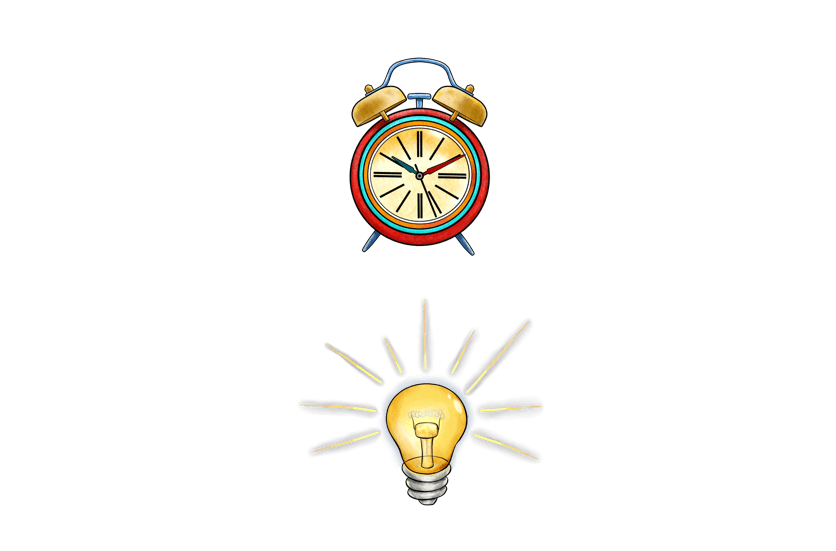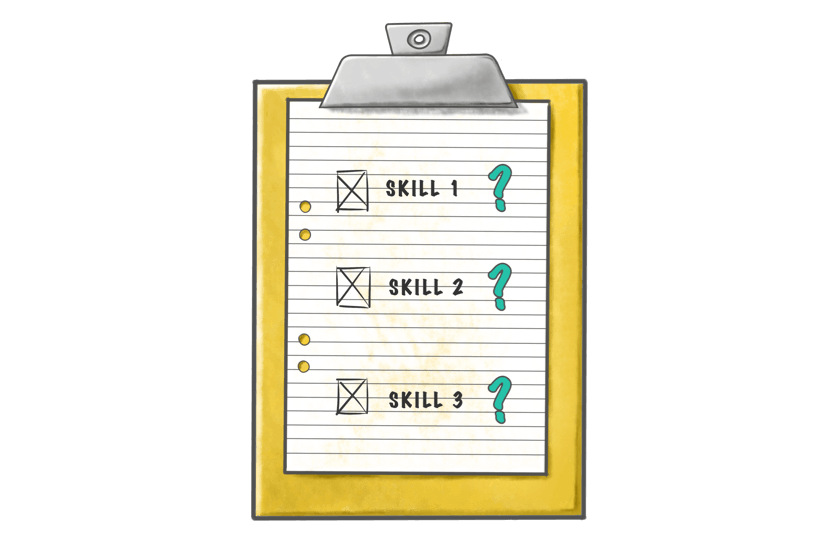
There are known knowns, things we know that we know; and there are known unknowns, things that we know we don't know. But there are also unknown unknowns, things we do not know we don't know. - Donald Rumsfeld
Keeping up to date with need-to-know info in the workplace is challenging. We receive a high volume of content via a variety of communication channels. The onus is usually on us to commit need to know info to memory. Reading an email or a PDF can give a sense of familiarity with the content, yet it doesn't stick in our memory past a few days.
I experience this when I read a book. I feel engaged with the content and familiar with the concepts. Yet the gaps are quickly illuminated when I put the book down, and I ask myself a few questions about the chapters I've just read. There's a big difference between remembering the words on the page and parsing the underlying concepts into our existing memory schema. Does it fit with what I already know? Or does it take a counter-view and call what I already know into question? Can I even remember what I just read?!
For many years the predominant workplace training approach has been one and done, delivered with one or more full-day training sessions perhaps with a takeaway document. The onus is on each learner to somehow filter what they need to remember and commit it to memory. It's fair to say that this usually doesn't happen. Even if the content's engaging and we feel motivated after the session, as soon as we leave the odds of us retaining what we've just learned drop, as the firehose of noise from our professional and personal life resumes. This immediately pushes the just-learned content below the surface, soon to be forgotten.
If forgetting what we're supposed to know is the worst of it, I wouldn't be writing this post. Unfortunately, in many businesses and workplaces, forgetting a step in a process or missing a task on a checklist can have significant consequences, including personal and community safety, reputation and financial to name a few. Sometimes these consequences are the result of mistakes that are preventable.This illuminates the second piece of the puzzle, which is that we don't know what staff don't know until a mistake or an accident happens. We're effectively blind, and a lack of insight into weak areas of knowledge and understanding introduces risk and uncertainty. So how can we both help our people retain need to know information, and gain insight into what they do and don't know?
Identify and monitor concepts
First we need to identify the key concepts we'd like people to retain from training, assuming six months down the track they'll remember a fraction of what was taught. If we use a one-day training course as an example, what are the key takeaways from the day? What are the top 5 or 10 must-know pieces of information? How will we embed this must-know information over the coming months?
If the must-know information relates to a process, we can ensure that process completion is monitored actively over the coming months. This monitoring could take the form of lead and lag indicators. A lead indicator may be the number of times the process is completed successfully within a specific timeframe. While a lag indicator could be a reduction in incidents or mistakes that we know the process contributes to.
Team leads could talk to their teams about the process and any issues in performing it. If there's a barrier to completion, it may be environmental or cultural rather than knowledge or understanding. This is valuable intel that may inform other changes to give the best chance of success.
Embed concepts with quizzing and spaced repetition
Quizzing
Multi-choice questions get a bad rap. Especially when they’re used purely for assessment, where the objective is to produce a score. I’m sure you have fond memories (as I do), of answering 150 multi-choice questions for an exam at school or uni. And at the end receiving a numerical score. No feedback on correct and incorrect answers. Just a solitary score. Great! Now what?
Multi-choice used in this way is blunt-force assessment that results in zero learning. However, there is a better way. Multi-choice quizzes can be a powerful learning tool. They’re most beneficial when used as a learning technique to improve memory rather than as an assessment.
Quizzes can:
- Encourage repetition of learning concepts
- Present learners and instructors with immediate feedback
- Highlight common misunderstandings
Studies show that students who have been quizzed have a double advantage: a more accurate idea of what they do and don't know and improved memory as a result of having to regularly recall knowledge. (Brown et al.)
Questions can be used at any time throughout the training cycle, whether that’s pre, during and post training interventions.
- Pre: Questions can be used to surface common misconceptions before training starts. This can assist the trainer in focusing attention on specific areas for improvement.
- During: Questions can be used to check knowledge and understanding of just-learnt concepts throughout the training. This can provide a useful indication to the instructor as to how well learners are receiving what’s being taught.
- Post: Questions can be used to reinforce learning concepts over time, providing retrieval practice and feedback.
Although retrieving an answer in this way can feel like a real effort, the very process of recalling an answer is a valuable part of learning. And it’s called active recall. Having to recall what you know rather than simply reviewing it strengthens memory, increasing the chances you’ll remember it again. And when you’re unable to answer a question, you know you need to revisit the material or relearn it.
Karpicke and Roediger (2006) performed a series of experiments in which participants learned lists of words and were assessed on their memory exactly one week after learning. They found that when people attempt to recall previous items during learning sessions, rather than simply studying them, retention was enhanced by more than 100%.
To be most effective, retrieval needs to be repeated again and again in spaced sessions, so the recall requires cognitive effort. After a lot of repeated retrieval, we get to the point where our knowledge and skills become reflexive.
It's actually revisiting paired with active retrieval that strengthens memory. To be most effective, retrieval needs to be repeated again and again in spaced sessions, so that the recall requires cognitive effort. Sessions may initially be spaced a few days apart and then as memory strengthens moved out to once a month. Having to recall knowledge right when we're about to forget it strengthens knowledge - even though the actual recall may feel hard at the time.
Spaced repetition
The spacing effect is one of the oldest and best documented phenomena in the history of learning and memory research - Harry Bahrick and Lynda Hall
Research tells us that we learn best when we’re repeatedly exposed to knowledge and skills over time. The practice of regularly returning to previously learnt concepts creates new learning pathways, strengthening long-term memory.
Studies show that students who cram for final exams lose much of their memory within a few weeks, yet students who learn slowly with continuous reinforcement can capture skills and knowledge for decades.
So how does spaced repetition work?
Spaced repetition interactions may initially be a few days apart and then as memory strengthens moved out to once a month. You want to leave it long enough that it's a challenge to recall but not so long that you’re essentially relearning the material. In addition having to recall information just when you’re about to forget it strengthens knowledge – even though the actual recall may feel hard at the time.
Embedding knowledge in this way produces better mastery, longer retention and more versatility. Despite hundreds of research papers demonstrating the benefits of spacing in a variety of applications, it’s still rarely used in the workplace. No longer!

Gain insight into what people do and don't know
So there are benefits to the individual learner when they complete a quiz and receive feedback on strong and weak topic areas. There are also significant benefits in gaining this insight at scale, whether that's teams, divisions or even the entire company. These insights can inform future training, that can focus on just the weaker areas. If this practice continues over time, it creates a feedback loop, so post-training team leads can see which topics have been understood and are embedded, and which require further work.
Case study
Supercheap Auto discovered that knowledge they assumed team members had was actually some of their lowest performing areas. They also discovered that team members were avoiding some aisles in store such as child-restraints due to a lack of knowledge. They've since shared these insights with trade-partners, and followed up with additional hands on in-store training. As a result, Supercheap Auto's Net Promoter Score (NPS) score increased 9 points in just 6 weeks and and they saw an increase in like-for-like sales for products in the Safety Aisle.
Wrap up
In our experience, identifying key concepts and embedding them over time improves long-term memory retention. And regularly revisiting concepts can give insight into what people do and don't know. This approach is one way to tackle preventable mistakes and attempt to reduce them over time.
To learn about the big impact little bites of learning can have, download our microlearning white-paper.


















































































































